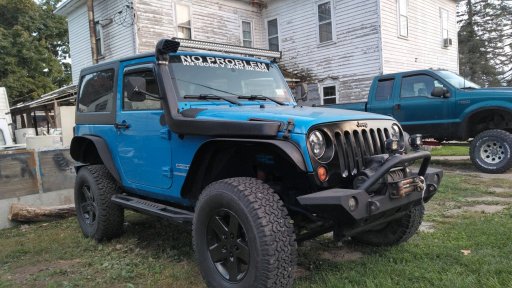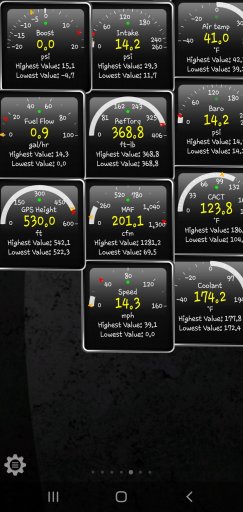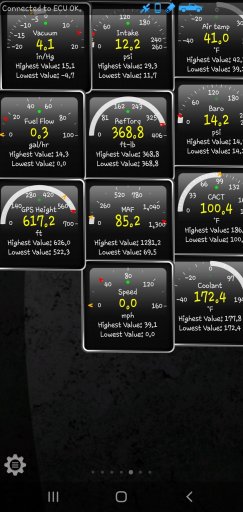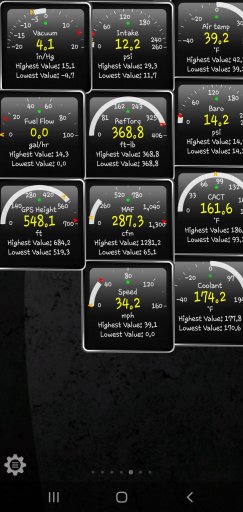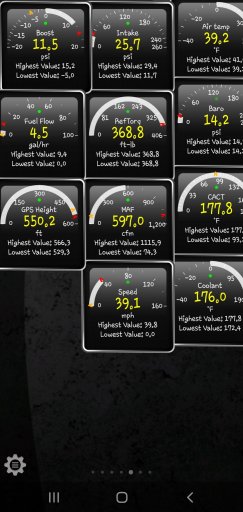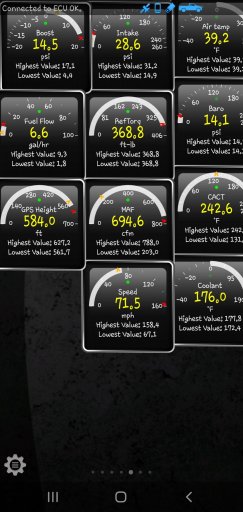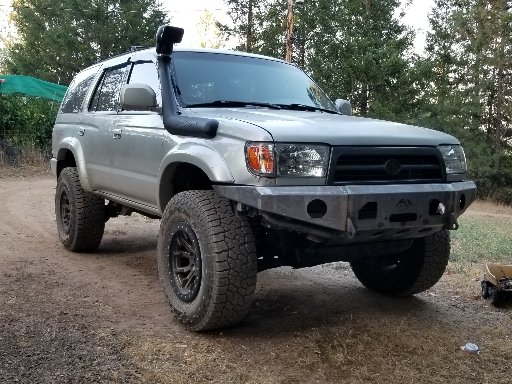
Influencer I
One of the replies above suggested a little research, so I started looking around, and thought I'd share what can be found and a few personal musing based on what's out there. Unfortunately, this one got long again... summary at the bottom.
DUST
ASPW of 4xOverland did a short 3min VIDEO HERE on the merits of a snorkel for dusty conditions that are similar to what I see near the Jemez Mountains of Northern New Mexico. The screenshots (below) from his video (which I recommend watching) show the dust issue. Note the dust flooding from the front wheel wells in both photos, also note the absence of dust at the top of the windshield where the snorkel intake would be mounted. The video also shows the result of knocking the dust out of the air filters on two vehicles driven in these conditions, one without a snorkel and one with a snorkel. The difference between with and without snorkel is very apparent. It seems to me that depending on where you drive, a snorkel can make a significant difference in the amount of dust/debris drawn into the air filter and this might be a real justification for a snorkel.

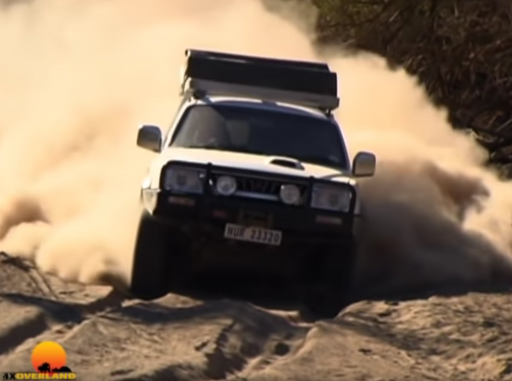
PERFORMANCE
I also ran across videos from Safari 4x4, showing dyno testing results with and without their 4" snorkel for:
a Ford Ranger which picked up ~+10% power and torque
and
a Toyota Landcruiser 200 Series which picked up ~30% power and torque
The videos aren't clear, but I believe the Ford Ranger is a 3.2 liter I5 Duratorq turbo diesel and the Toyota Landcruiser is a 4.5 liter V8 twin-turbo diesel based on the shape of the power/torque curves produced by the dyno testing. This makes sense - anything that helps a turbodiesel breathe generally improves performance. Notably, the Safari 4x4 videos don't make a similar claim regarding their 3" snorkels, which are about the same diameter as the stock intake plumbing. But this is their channel and their product. I think if they thought they could claim improvement for the 3" snorkel, or for non-turbodiesels, they'd have posted a video or five.
Because they've only posted videos of dyno testing on turbodiesels, I'm going to pull out a Oujia Board and a crystal ball and dust off some old thermodynamics skills - be warned, several semi-scientific wild-assed guesses ahead. So, with that said, I would expect the larger diameter intake to produce more improvement in a forced induction induction engine than a naturally aspirated engine and I would expect a diesel to respond better than a gasoline engine - so the turbodiesel results represent a best case (and of course, on the corporate channel, you put your best numbers out).
My next question is *where* might you see "gains"? The turbodiesels (above) picked up pretty consistently across the entire RPM range (often best at the low end) and I might expect similar consistency across the range for forced induction gasoline engines (though with less gain than the turbodiesels got). For a naturally aspirated gasoline engine, well, no one seems to be putting these on a dyno with and without a snorkel - BUT based on what is dyno'd with other intake mods, I would guess that for an NA-gasoline engine, you'd see next to nothing below 2000 RPM, with the best gains over 3000 RPM where the engine struggles most for air? (see the Underdog Racing Development site for an example, but beware: there was a 12F temperature difference during the tests which, surprise, FAVORED their product.) So it seems that adding a larger snorkel to a turbodiesel would be justified in terms of potential performance gain, but not for an NA-gasoline engine until someone produces dyno results to the contrary. (NA-diesel and FI-gasoline engines would fall somewhere between)
SUMMARY
DUST
ASPW of 4xOverland did a short 3min VIDEO HERE on the merits of a snorkel for dusty conditions that are similar to what I see near the Jemez Mountains of Northern New Mexico. The screenshots (below) from his video (which I recommend watching) show the dust issue. Note the dust flooding from the front wheel wells in both photos, also note the absence of dust at the top of the windshield where the snorkel intake would be mounted. The video also shows the result of knocking the dust out of the air filters on two vehicles driven in these conditions, one without a snorkel and one with a snorkel. The difference between with and without snorkel is very apparent. It seems to me that depending on where you drive, a snorkel can make a significant difference in the amount of dust/debris drawn into the air filter and this might be a real justification for a snorkel.


PERFORMANCE
I also ran across videos from Safari 4x4, showing dyno testing results with and without their 4" snorkel for:
a Ford Ranger which picked up ~+10% power and torque
and
a Toyota Landcruiser 200 Series which picked up ~30% power and torque
The videos aren't clear, but I believe the Ford Ranger is a 3.2 liter I5 Duratorq turbo diesel and the Toyota Landcruiser is a 4.5 liter V8 twin-turbo diesel based on the shape of the power/torque curves produced by the dyno testing. This makes sense - anything that helps a turbodiesel breathe generally improves performance. Notably, the Safari 4x4 videos don't make a similar claim regarding their 3" snorkels, which are about the same diameter as the stock intake plumbing. But this is their channel and their product. I think if they thought they could claim improvement for the 3" snorkel, or for non-turbodiesels, they'd have posted a video or five.
Because they've only posted videos of dyno testing on turbodiesels, I'm going to pull out a Oujia Board and a crystal ball and dust off some old thermodynamics skills - be warned, several semi-scientific wild-assed guesses ahead. So, with that said, I would expect the larger diameter intake to produce more improvement in a forced induction induction engine than a naturally aspirated engine and I would expect a diesel to respond better than a gasoline engine - so the turbodiesel results represent a best case (and of course, on the corporate channel, you put your best numbers out).
- Guessing based on some axial-flow fan testing I did 30+ years ago - the temperature difference over ~40ft of duct wasn't measureable and the flow was basically adiabatic/incompressible even at flow speeds resembling highway speed limits.
- With almost 2x (16/9) the cross-sectional area, a 4" will flow ~2x better than a 3", i.e. probably closer to half the velocity at the same volume than twice the volume at the same velocity, and thus a thinner boundary layer, so generally lower viscosity losses through the intake system upstream of the filter for the 4" diameter snorkel vs the 3" diameter snorkel.
- I'll have to think through how this might impact harmonic resonance issues, but my guess is that the longer path will push the 1st and 2nd harmonics of the snorkel to well below the operating RPM of the engine, leaving only the lower energy higher harmonics to worry about?
- As for the longer curved path of a snorkel of the same diameter as the stock intake plumbing, I would expect that the flow restriction this presents would be much smaller than the difference in restrictions presented by a clean vs dirty air filter - maybe less than 1/2"H2O on a manometer?
My next question is *where* might you see "gains"? The turbodiesels (above) picked up pretty consistently across the entire RPM range (often best at the low end) and I might expect similar consistency across the range for forced induction gasoline engines (though with less gain than the turbodiesels got). For a naturally aspirated gasoline engine, well, no one seems to be putting these on a dyno with and without a snorkel - BUT based on what is dyno'd with other intake mods, I would guess that for an NA-gasoline engine, you'd see next to nothing below 2000 RPM, with the best gains over 3000 RPM where the engine struggles most for air? (see the Underdog Racing Development site for an example, but beware: there was a 12F temperature difference during the tests which, surprise, FAVORED their product.) So it seems that adding a larger snorkel to a turbodiesel would be justified in terms of potential performance gain, but not for an NA-gasoline engine until someone produces dyno results to the contrary. (NA-diesel and FI-gasoline engines would fall somewhere between)
SUMMARY
- Snorkels are a WIN for dust
- Snorkels can gain performance for a turbodiesel if they are larger diameter than the stock intake plumbing
- I can't find dyno data for naturally aspirated gasoline engines, and from the absence I infer that snorkels aren't a performance win for these applications




